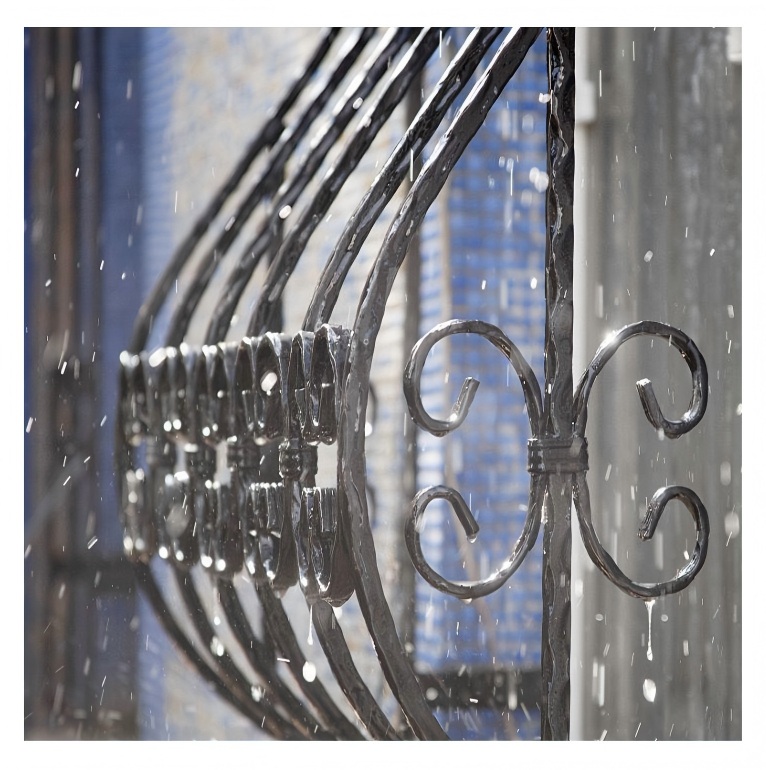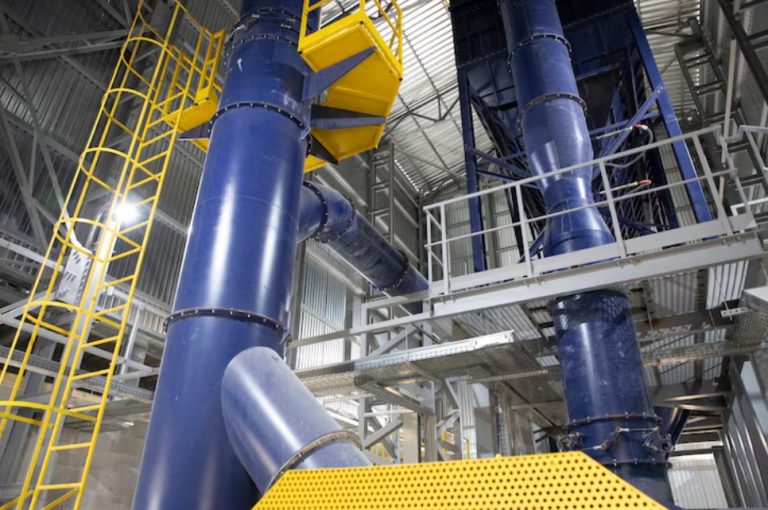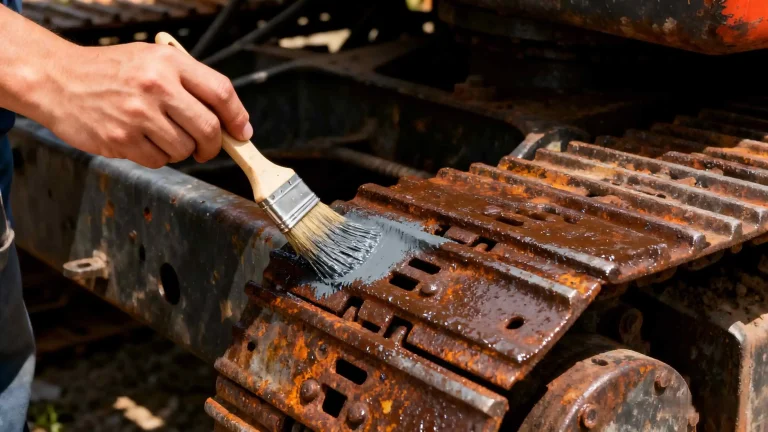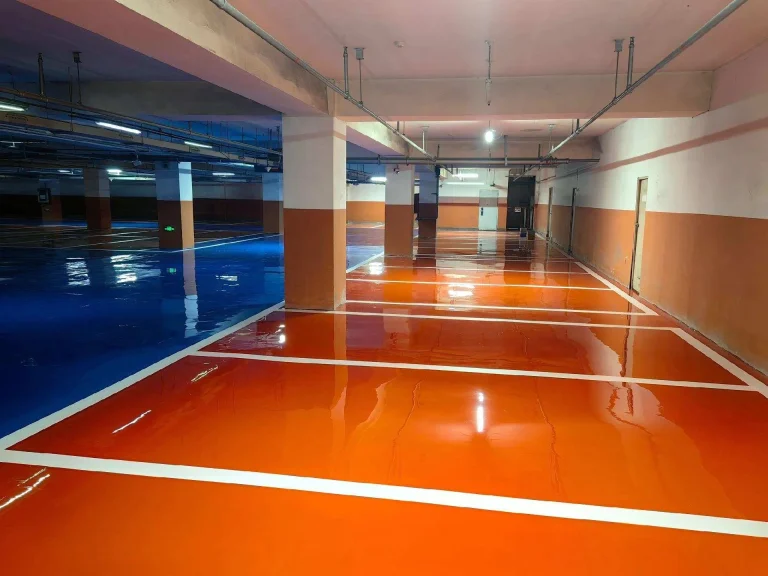
Ever looked at a rusty metal gate or a flaking pipeline and thought about how it ended up like that? Rust sneaks up on you. It turns tough steel into a crumbly wreck. I’ve spent years messing around with metal stuff in garages and on work sites. And let me tell you, putting on anti-rust paint isn’t just about brushing it on and walking away. It’s all about paying attention to the little things. Otherwise, you’ll blow time and cash on fixes. In this piece, we’ll go over five usual slip-ups folks make with anti-rust paint. I’ll toss in some easy fixes too. Hang in there. Nailing this can keep your metal stuff safe from rust for a long time.
Anti-rust paint sets up a shield against water, salt, and air. Those are the bad guys that start rust. But screw up the job, and that shield breaks. Rust takes over. Take a steel bridge by the sea, hit with salty wind. Without a good coat, fixes could run into big bucks. On your end, same deal for a grill in the yard or tools in the shop. Let’s jump in.
Mistake #1: Skipping Proper Surface Preparation
This is a huge one. I’ve talked to people who hurried into painting. Their work bubbled and came off in months. Why? They skipped cleaning the surface right. Grime, oil, old paint bits, or loose rust wreck the grip between paint and metal. It’s like taping over a dirty window. It won’t stick.
Say you’re fixing up an old machine part. If you don’t scrub it well, the anti-rust paint just sits on junk. In wet spots, water sneaks under. That speeds up rust. Stuff from the rust-fighting world says bad prep causes most coating flops—up to 80%. Not just numbers. I’ve spotted it on sea rigs where salt piles up. Turns a fast task into a headache.
How to Avoid It
Get a fresh start. Grab a wire brush or sandpaper. Scrape off loose rust and old layers. Go for that bare metal gleam. Next, wipe off grease with something like mineral spirits. For rough spots, a pressure washer works great. But dry it all out after. No wet marks.
With a solid anti-rust paint that sticks well, this step really shines. It holds firm. Fights peeling in harsh spots. Put on light layers for top results. Always peek at the maker’s tips. Some paints work as primers too. Saves effort. From what I’ve done, an extra hour cleaning can make the paint last way longer.
And don’t forget. Test a tiny bit first. See if it bonds right.
Mistake #2: Ignoring Weather and Environmental Conditions
Weather throws curveballs. I recall a pal who coated his yard fence on a misty day. By night, the paint felt sticky and lumpy. Weeks later, rust dots showed up. Wet air, temp changes, or breeze can mess with dry times and hold.
Lots of moisture locks water in the paint layer. Causes bubbles. Too chilly, paint gets thick. Leads to lumps. Too warm, it sets quick. Traps air pockets. In beach areas with salty mist, painting in fog is bad news. Salt bits sink into wet paint. Weakens its rust block.
How to Avoid It
Look at the weather app. Pick calm days: 50-85°F, not too damp. Shade helps if sun’s out. Stops fast drying. Indoors, vent well for fumes. But skip windy spots that stir dust.
A decent anti-rust paint deals with some ups and downs. But don’t test limits. Go for quick-dry ones—under 2 hours at room temp. Means less waiting in dicey weather. I like starting mornings. Gives paint time to set before night damp.
If it’s ships or pipes in wild spots, pick paints proven against salt fog. They’re made for it.
Sometimes, you gotta wait a day. Better safe than sorry.
Mistake #3: Applying the Paint Too Thick or Too Thin
How thick counts a lot. Too heavy, it droops, drips, or holds in stuff that cracks later. Too light, you shortchange the guard. Leaves weak points for rust. I’ve yanked my hair over tasks with bumpy layers. Meant starting over.
In factory work, like tank covers, a skimpy layer might hit 4-6 square meters per kg. But it won’t stop water good. Heavy coats waste stuff. Slow dry too. Can cause that cracked skin look.
How to Avoid It
Stick to the spread rate—about 6-8 square meters per kg per layer for good anti-rust paints. Get a gauge for thickness if you’re into it. Shoot for 2-3 mils dry per go.
Mix the paint good before. Specially if it’s sat around. Spread even: Spray big zones, brush edges, roll flats. Two light layers beat one fat one. Wait for first to feel dry—2 hours usually—before next.
On machine tasks I’ve handled, this way gives a nice flat or shiny-ish look. Tough on rust start. Saves money—no extra toss.
Plus, it looks pro. No runs or sags.
Mistake #4: Using the Wrong Tools or Techniques
Tools aren’t all the same. I’ve seen home fixers snag a cheap brush. Hairs drop into wet paint. Ruins it. Or they spray sloppy. Stuff flies all over.
Bad moves make it worse. Brushing hard stirs bubbles. Rolling without smoothing leaves marks. For big steel builds, wrong gear misses cracks. Rust hides there.
How to Avoid It
Fit the tool to the work. Brushes for corners, rollers for wide parts, sprays for speed on large stuff. But cover spots to catch spray mess.
Work on your style: Soft, steady pulls avoid drips. For sprays, hold 8-12 inches off. Move smooth.
A flexible anti-rust paint works with spray, brush, or roll. Eases things. In my shed trials, swapping tools mid-way cut time. No quality drop. Clean gear quick. Stops dried clumps.
And yeah, gloves on. Paint on hands sucks to clean.
One more thing. Practice on scrap first. Gets you in the groove.
Mistake #5: Rushing the Drying and Curing Process
Not everyone’s patient. But rush here, and you’ll kick yourself. Poke wet paint or hit it with weather early. Dust, bugs, or wet wreck it. Full set takes 24 hours plus. Skip that, weak shield.
On yard metal bits, early use scratches to bare. Exposes it. Know a yard that hurried pipe paint. Salt water got it pre-dry. Rust hit quick.
How to Avoid It
Give it time: Dry to touch in 2 hours, solid in 24 at 25°C. Shield the spot—covers for rain, blocks for folks.
Store done stuff cool and dry while setting. Good paints last 12 months sealed. Keep fresh.
I’ve timed it: Friday paints for weekend rest. Locks in strong, cheap guard from wet and salt.
It builds trust too. No early fails.
Why Choose Konaz as Your Anti-Rust Paint Supplier

If you’re hunting for trusty anti-rust fixes, Konaz shines. Out of Foshan, we’ve made top coatings for over 15 years. We zero in on stuff like our Anti-Rust Paint for metal bases. It gives top anti-rust, firm grip, and simple use by spray, brush, or roll. Comes in grey, red oxide, or your pick. Covers 6-8㎡/kg per layer. Dries fast—touch in under 2 hours. In 20kg drums, lasts 12 months sealed. Great for steel builds, machines, pipes, boats, and yard metals. We push new ideas and quality. Ship worldwide. Keep it green and smooth.
We’ve grown our setup. Modern plant at 3000 square meters. Over 30 machines. Pump out 1000 tons a year. Folks trust us for that.
Conclusion
To sum it up, dodging these five slip-ups with anti-rust paint comes down to cleaning, waiting, and grabbing the right stuff. Do it well, and your metal holds up longer. Cuts drama and costs. Pro or hobby guy, these hints help big. Rust doesn’t quit. Gear up right.
FAQs
What are the most common mistakes when applying anti-rust paint?
The main ones are bad cleaning, skipping weather checks, wrong layer thickness, off tools, and hurrying dry. Each leads to peels or weak guards. I’ve seen it flip easy tasks to repeats.
How can I avoid mistakes when applying anti-rust paint on steel structures?
Clean and degrease first. Watch conditions. Do thin, even layers. Pick right tools. Let dry full. Paint with good grip aids.
Is there a best way to apply anti-rust paint to avoid peeling?
Sure—solid cleaning and light coats. Skip heavy ones; they hide problems. Dry each layer right for strong hold.
Why does my anti-rust paint fail, and how to avoid those common mistakes?
Often dirt or wet air. Skip by deep cleans, calm day paints, and dry rules. Solid paint fights better in rough areas.
Can anti-rust paint be used as both primer and topcoat without mistakes?
Yeah, if made for it. Don’t cut corners on clean or thickness. Gets lasting cover.










